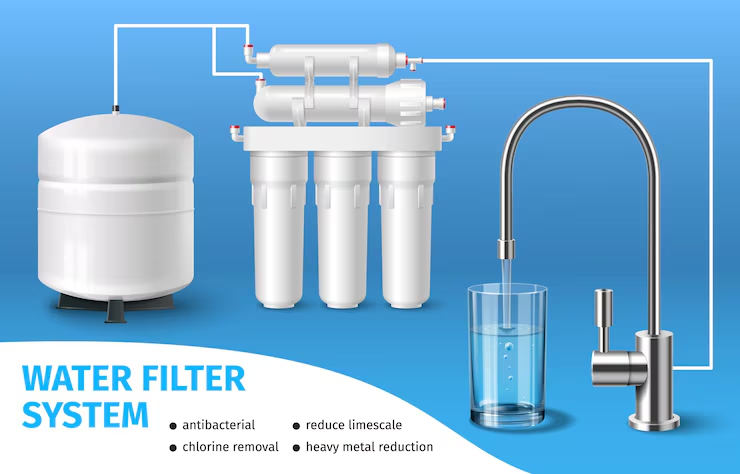If you live in Costa Mesa, California, you’ve probably noticed white scale on your faucets, dry skin after showering, or a funny taste in your water. These are classic signs of hard water, a common problem in many U.S. households. But what’s the best solution a reverse osmosis (RO) system or a water softener?
break down everything you need to know about reverse osmosis vs water softener, including:
How each system works
Costs (including whole house reverse osmosis system cost)
Pros and cons
Which is better for your home in Costa Mesa, CA
Latest 2025 technology updates
By the end, you’ll know exactly which system is the best choice for your water problems.
What Is Hard Water?
Hard water contains high levels of calcium and magnesium, which come from dissolved minerals in groundwater.
How Hard Is Costa Mesa’s Water?
In 2025, Costa Mesa’s water hardness ranges between 5–10 grains per gallon (GPG), which is moderately hard to hard.
| Soft | 0–1 | 0–17 |
| Slightly Hard | 1–3.5 | 17–60 |
| Moderately Hard | 3.5–7 | 60–120 |
| Hard | 7–10.5 | 120–180 |
| Very Hard | 10.5+ | 180+ |
Effects of Hard Water:
-
Scale buildup in pipes & appliances
-
Soap doesn’t lather well (leading to dry skin & stiff laundry)
-
Spots on dishes & shower doors
-
Reduced water heater efficiency
What Is a Water Softener?
A water softener removes calcium and magnesium through ion exchange, replacing them with sodium or potassium.
How Does a Water Softener Work?
-
Resin Tank: Contains tiny beads charged with sodium ions.
-
Ion Exchange: Hard water flows through, and calcium/magnesium stick to the beads while sodium is released.
-
Regeneration Cycle: Every few days, the system flushes the minerals away with saltwater.
Pros of Water Softeners
✔ Prevents scale buildup (extends appliance life)
✔ Softer skin & smoother hair
✔ Cleaner dishes & brighter laundry
✔ Whole-house coverage (all water is treated)
Cons of Water Softeners
✖ Adds sodium to water (not ideal for low-sodium diets)
✖ Requires salt refills (maintenance)
✖ Doesn’t remove other contaminants (chlorine, lead, etc.)
Best For:
-
Homes with very hard water
-
People who want softer skin & better appliance performance
What Is Reverse Osmosis (RO)?
A reverse osmosis system forces water through a semi-permeable membrane, removing up to 99% of contaminants, including:
-
Heavy metals (lead, arsenic)
-
Chlorine & fluoride
-
Bacteria & viruses
-
Dissolved salts (TDS)
How Does Reverse Osmosis Work?
-
Pre-Filtration: Sediment & carbon filters remove large particles.
-
RO Membrane: Removes microscopic contaminants.
-
Post-Filter: Polishes water for better taste.
-
Storage Tank: Holds purified water for on-demand use.
Pros of Reverse Osmosis
✔ Removes almost all impurities (safer drinking water)
✔ No sodium added (unlike softeners)
✔ Better-tasting water (great for cooking & drinking)
Cons of Reverse Osmosis
✖ Wastes water (3–4 gallons wasted per 1 purified)
✖ Slower filtration (needs a storage tank)
✖ Higher initial cost than basic softeners
Best For:
-
Homes with contaminated water (lead, chemicals)
-
People who want ultra-pure drinking water
Reverse Osmosis vs Water Softener: Key Differences
| Main Purpose | Removes hardness minerals | Removes all contaminants |
| Best For | Scale prevention, soap efficiency | Drinking water purity |
| Maintenance | Salt refills | Filter changes |
| Water Waste | None | 3–4 gallons wasted per 1 purified |
| Cost (2025) | $800–$2,500 | $200–$1,500 (under-sink), $5K–$15K (whole-house) |
| Whole-House? | Yes | Possible but expensive |
Whole House Reverse Osmosis System Cost (2025 Update)
Most RO systems are under-sink, but whole-house RO systems exist for complete purification.
Cost Breakdown:
-
Under-Sink RO: $200–$1,500
-
Whole-House RO: $5,000–$15,000
-
Requires larger membranes, booster pumps, and storage tanks
-
High maintenance (frequent filter changes)
-
Is Whole-House RO Worth It?
✅ Yes if:
-
Your water has high TDS or dangerous contaminants
-
You want pure water from every tap
-
You can afford high costs & maintenance
❌ No if:
-
You only need hardness removal (softener is cheaper)
- You’re concerned about water waste
Which Is Better for Costa Mesa, CA?
Since Costa Mesa has moderately hard water (5–10 GPG), here’s the best solution:
-
For Hard Water Only: A water softener is the most cost-effective.
-
For Drinking Water: An under-sink RO + softener is ideal.
-
For Whole-House Purity: A softener + RO at key points beats whole-house RO.
Final Verdict (2025 Update)
-
Water Softener: Best for scale prevention & whole-house softening.
-
Reverse Osmosis: Best for ultra-pure drinking water.
-
Hybrid System (Softener + RO): The perfect combo for Costa Mesa homes.
Recommendation:
✔ Install a water softener for whole-house protection.
✔ Add an under-sink RO for clean drinking water.
✔ Skip whole-house RO unless you have severe contamination.
 :
https://www.pinterest.com/
:
https://www.pinterest.com/

